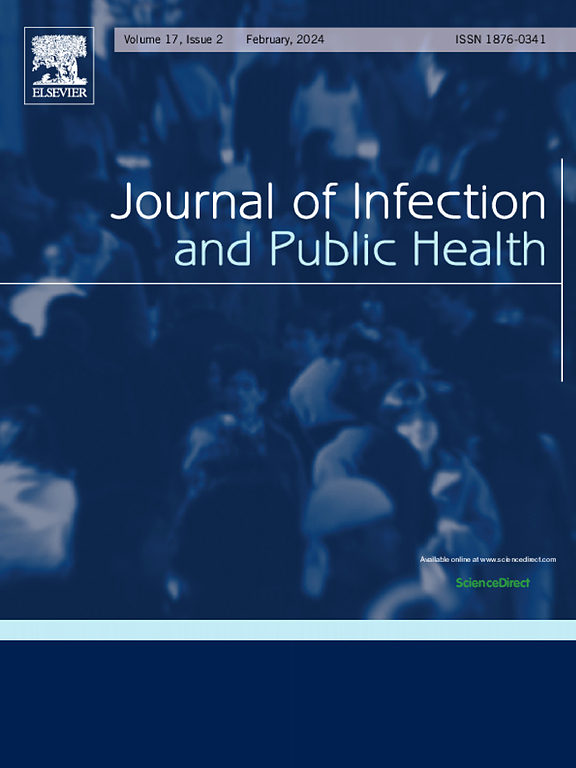Transmission of Severe Fever with Thrombocytopenia Syndrome (SFTS) to humans: A systematic review of individual participant data and meta-analysis
IF 4.7
3区 医学
Q1 INFECTIOUS DISEASES
引用次数: 0
Abstract
Severe Fever with Thrombocytopenia Syndrome (SFTS) is a life-threatening emerging infectious disease caused by the SFTS virus. The aim of this systematic review and meta-analysis was to gain new insights into the routes of transmission to humans and assess whether tick bites are the dominant mechanism, as previously reported in the medical literature. Original articles were searched through Embase, Medline, and Global Health from 2009 to 2022. We performed meta-analyses to pool adjusted odds ratio (aOR) estimates using a fixed-effects model. Of 1683 articles, 41 eligible articles from three countries met the inclusion criteria, and five case-control studies were included in the meta-analysis. The most commonly reported route of transmission in the systematic review of individual participant data was person-to-person contact, particularly through exposure to blood or body fluids. Other routes included tick bites and contact with infected animals, especially cats and dogs. The meta-analysis included studies reporting transmission through human contact (n = 1), tick bites (n = 4), and animal contact (n = 1). Human contact via exposure to bodily fluids significantly increased the odds of infection (aOR: 6.27, 95 % CI: 1.23–42.81). Tick bites had a pooled aOR of 6.36 (95 % CI: 3.34–12.11). Among animal contacts, only dog contact was significant (OR: 3.60, 95 % CI: 1.04–12.51). The typical settings for SFTS transmission were human or animal hospitals, homes, and natural tick habitats. Education and effective interventions to prevent human-to-human spread, in addition to preventing transmission by tick bites, are urgently needed.
求助全文
约1分钟内获得全文
求助全文
来源期刊

Journal of Infection and Public Health
PUBLIC, ENVIRONMENTAL & OCCUPATIONAL HEALTH -INFECTIOUS DISEASES
CiteScore
13.10
自引率
1.50%
发文量
203
审稿时长
96 days
期刊介绍:
The Journal of Infection and Public Health, first official journal of the Saudi Arabian Ministry of National Guard Health Affairs, King Saud Bin Abdulaziz University for Health Sciences and the Saudi Association for Public Health, aims to be the foremost scientific, peer-reviewed journal encompassing infection prevention and control, microbiology, infectious diseases, public health and the application of healthcare epidemiology to the evaluation of health outcomes. The point of view of the journal is that infection and public health are closely intertwined and that advances in one area will have positive consequences on the other.
The journal will be useful to all health professionals who are partners in the management of patients with communicable diseases, keeping them up to date. The journal is proud to have an international and diverse editorial board that will assist and facilitate the publication of articles that reflect a global view on infection control and public health, as well as emphasizing our focus on supporting the needs of public health practitioners.
It is our aim to improve healthcare by reducing risk of infection and related adverse outcomes by critical review, selection, and dissemination of new and relevant information in the field of infection control, public health and infectious diseases in all healthcare settings and the community.
 求助内容:
求助内容: 应助结果提醒方式:
应助结果提醒方式:


